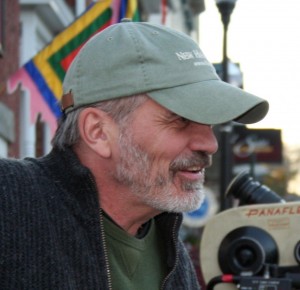Part 5, Finding the dollars

Raising the money was a difficult and arduous job and took us over a year. With the help of our lawyers, this step began with creating a lengthy document called a Confidential Private Placement Memorandum, generally referred to as the PPM. This was the legal vehicle by which people could actually write their checks and become investors. Everything had to conform to strict securities laws as we were selling private equity shares in a new company.
Understandably the controls on these kinds of ventures (including what one can and cannot do when pitching to potential backers) have to be tight, although I must admit the hoops we had to jump through at times came close to driving me crazy–especially with the PPM listing for pages every possible risk factor involved with investing in a movie, not so subtly suggesting that a person would have to be out of their mind to put money in an independent film.
Regardless of these frustrations, however, I must also say that laying everything out for investors in a totally transparent and formal way–including all the possible risk factors–put us in a very comfortable position with the folks who eventually decided to come on board with us. In other words, people knew exactly what they were getting into and that established a very trusting and supportive group of investors–something that throughout the process took considerable pressure off me as executive producer.
I have to mention here that we were fortunate enough to have on our legal team Jon Garon, who wrote the book on the legal issues involved with independent filmmaking called The Independent Filmmaker’s Law and Business Guide: Financing, Shooting and Distributing Independent and Digital Films. The second edition of the book has just been published and I highly recommend it to anyone walking down this road for the first time.
While we were preparing the PPM, we also had to set up an escrow account at a leading New Hampshire bank, an account that would hold all money until a predetermined amount was raised and we could “break” escrow and have access to the funds. For us, this escrow break was set at $500,000, just over half of our total budget of $950,000–the amount we needed to at least get us through the shoot of the film.
Although at first, raising almost a million dollars seemed an impossible mountain to climb, a small army of people got behind our vision and went out of their way to help us reach our goal. Parties were held, many letters and emails written, invites to speak at Rotary clubs and Chamber of Commerce breakfasts and lunches were offered, and innumberable personal contacts were made for us with town officials, businesses and individuals.
In the end, over 90% of our capitalization came from New Hampshire and most of that from the Peterborough area. I can’t thank the people of Peterborough and the surrounding communities in southwest New Hampshire enough for their support of our movie and their belief in our ability to pull the project off–especially when we had no track record in filmmaking and no Hollywood producing connections to back us up.
So this was the development phase of our project–writing our business plan, preparing the script, getting important actors and other key artistic and producing personnel committed to joining our adventure, making an initial foray into Peterborough, our one location for the film, coming up with a budget, and launching and sustaining our efforts to raise the money to produce the film.
(Next: Entering the pre-production phase…)













[…] This post was mentioned on Twitter by Patty Fantasia. Patty Fantasia said: RT @EitherOrFilms Indie producer Buzz McLaughlin on "Finding the Dollars" for a first feature http://bit.ly/Ooqlg […]